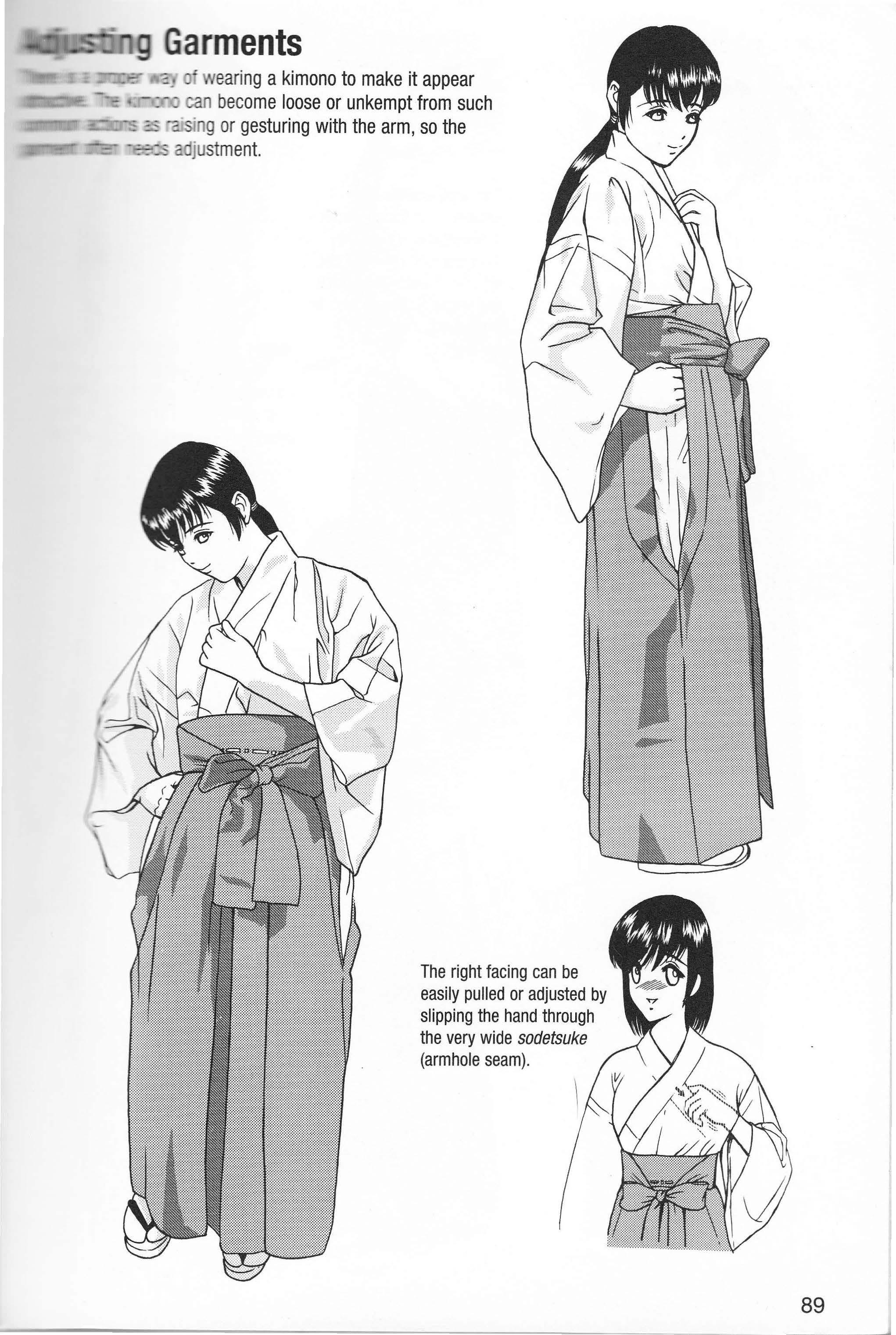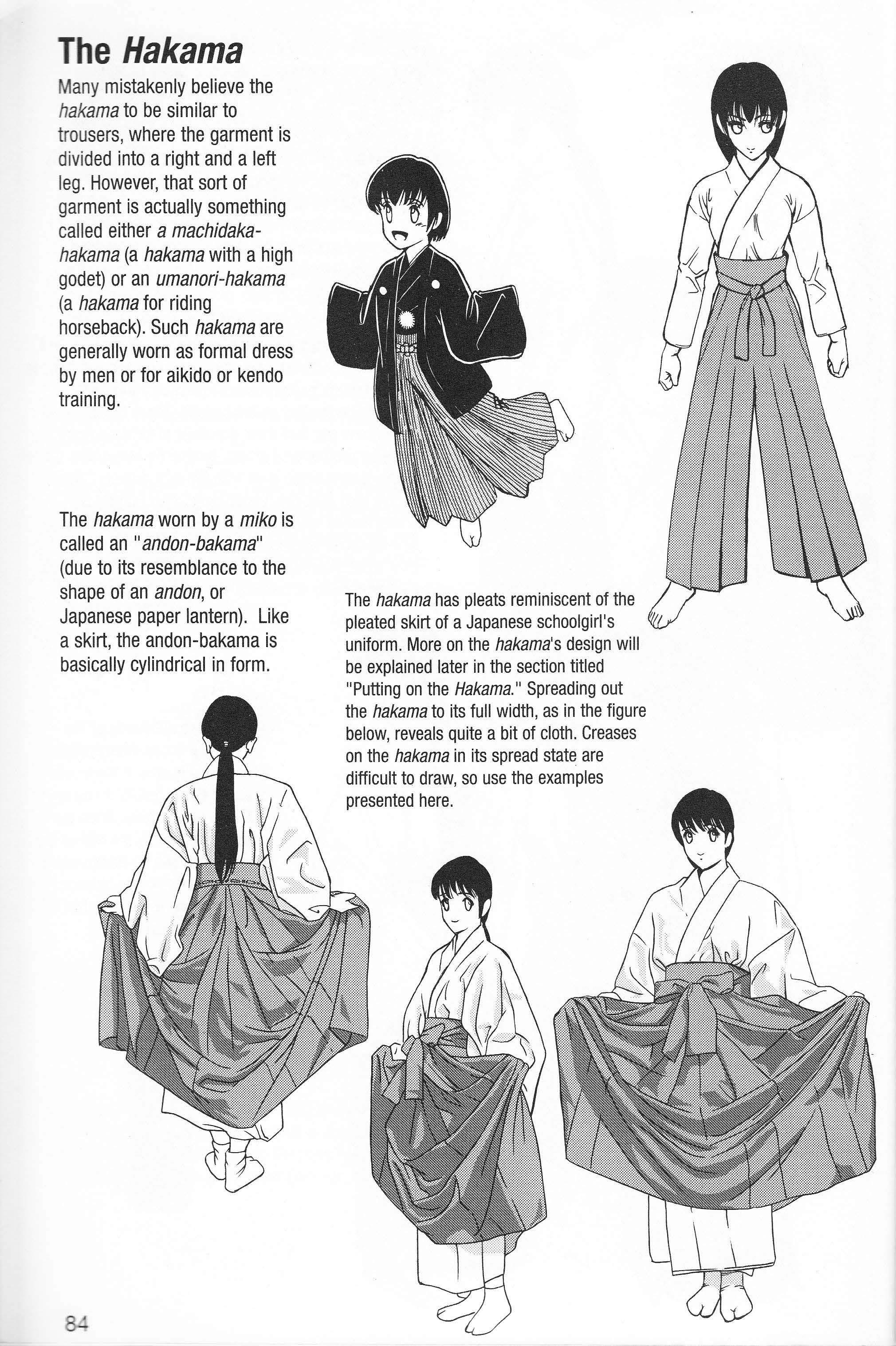
3 minute read
Holding a Broom
by Charlie San
ding a Broom
-age of a miko holding a broom : mmon, it is indispensable. For pose, draw the broom on the = : e when showing the miko against it.
The expanse of the hakw's sleeve from top to bottom is generous, allowing for a large shadow to form. The illustration to the left features a shadow extending from the shoulder to the elbow. Use bold shading.
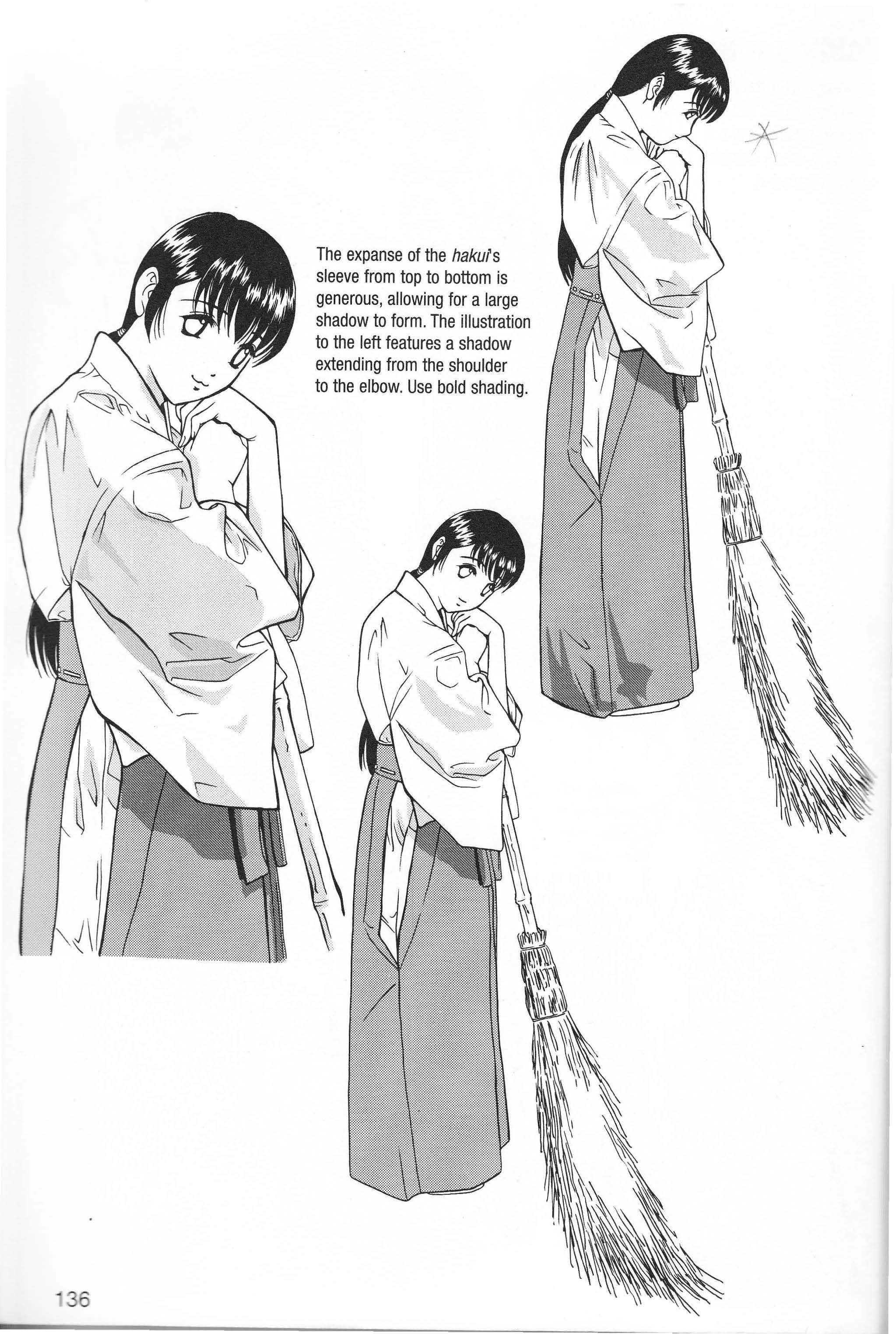

This large shadow works well with the composition. Be sure to use it as a reference.
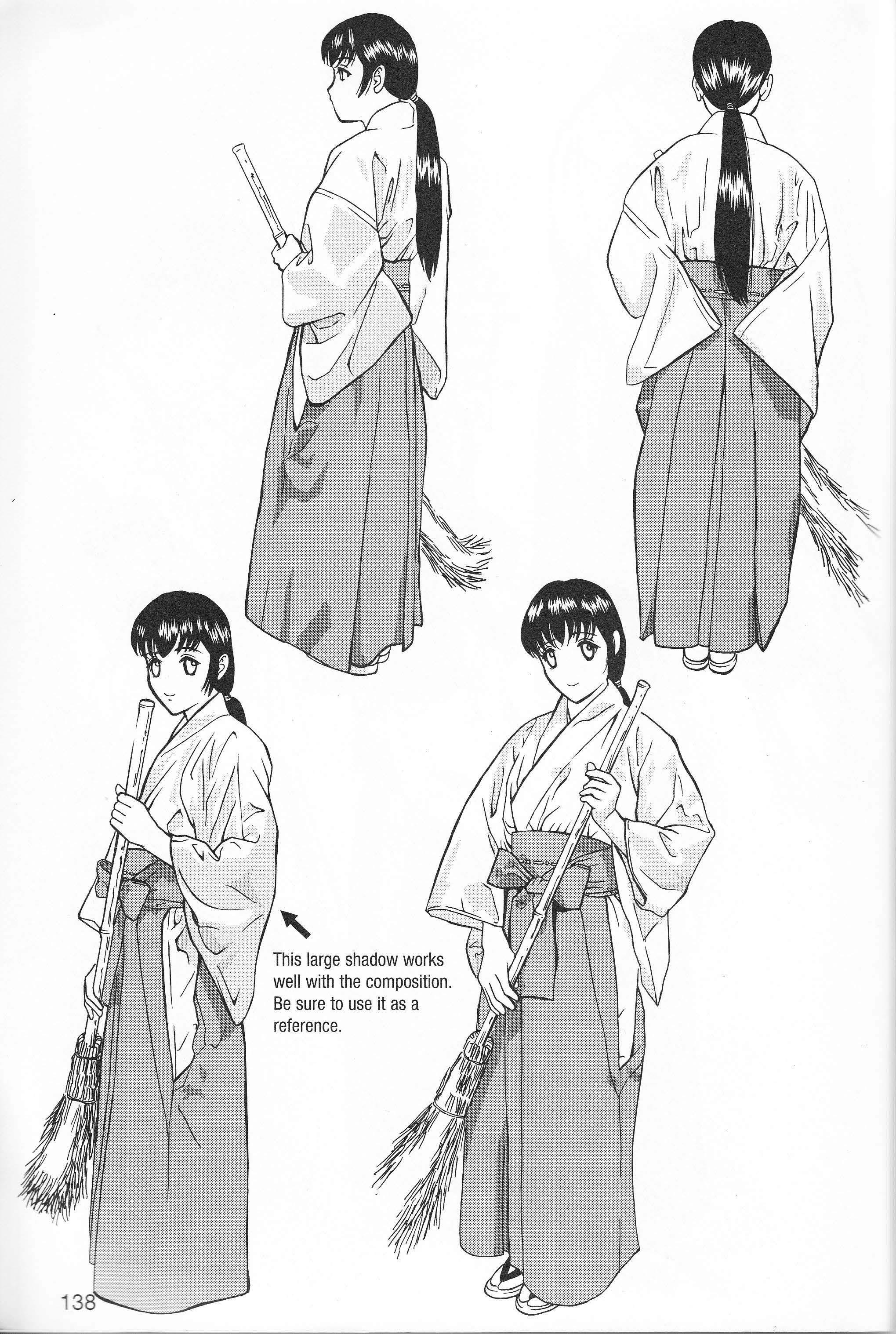

seems almost to float around the arm from the elbow. This is because the hakut's material is extremely stiff in texture. As a comparison, it is somewhat heavier dress shirt. The turi hanging under the sleeve often appears to be wrapped around the arm. Being aware of this point when looking at these sample drawings will help you take your
Looking at a character with the arms bent, the sleeve of the hakui than the material used in a man's own artwork to the next level.
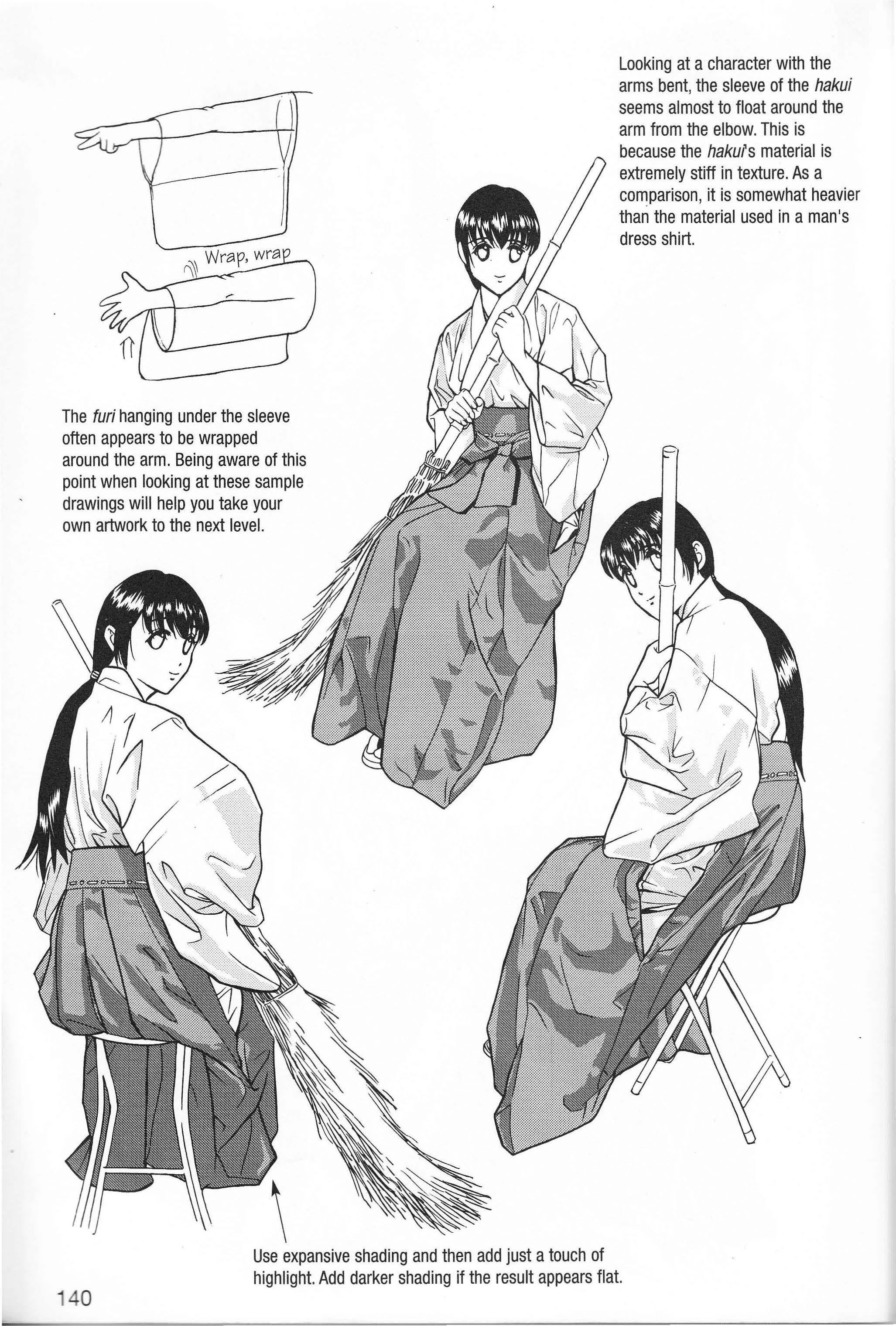
Remember when drawing the hakama that the knees are underneath. The top of the hakama is situated somewhat above the waist, and when the figure is seated seiza-style, the obi ends up in an unexpectedly high position. As a guideline, use a 1 :1 ratio of hakui (measured from the back of the neck) to hakama when drawing. The obi should be placed midway. This is an easy area to overlook, so take care. The cloth is drooping down somewhat. However, crease lines have been clearly delineated from the area where the knees are, suggesting their presence underneath. If you are able underneath clothing using minimal crease lines and shading in this manner, then you have reached an advanced level of character drawing. A great technique for suggesting a slight bend to the arm under the sleeve is to add a ripple line from the elbow. Incidentally, this is about how the arm would appear when
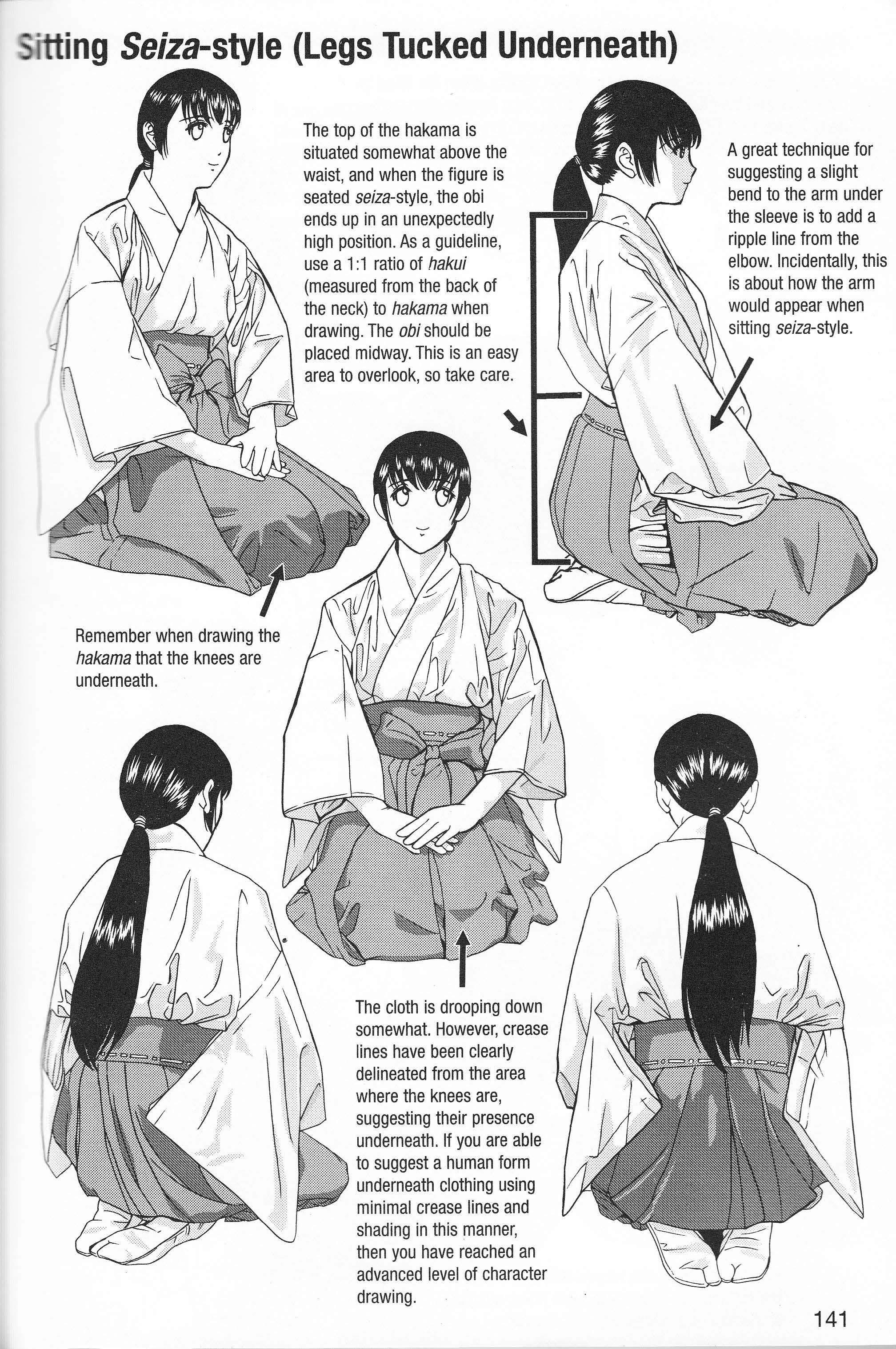
to suggest a human form sitting seiza-style.
Bowing While Seated Seiza-style
The shoulders shift forward and back, albeit slightly. When the chest is puffed out and the character is leaning back, then the shoulders roll back. Conversely, when the back is slumped and the character bends forward, then the shoulders roll toward the front.
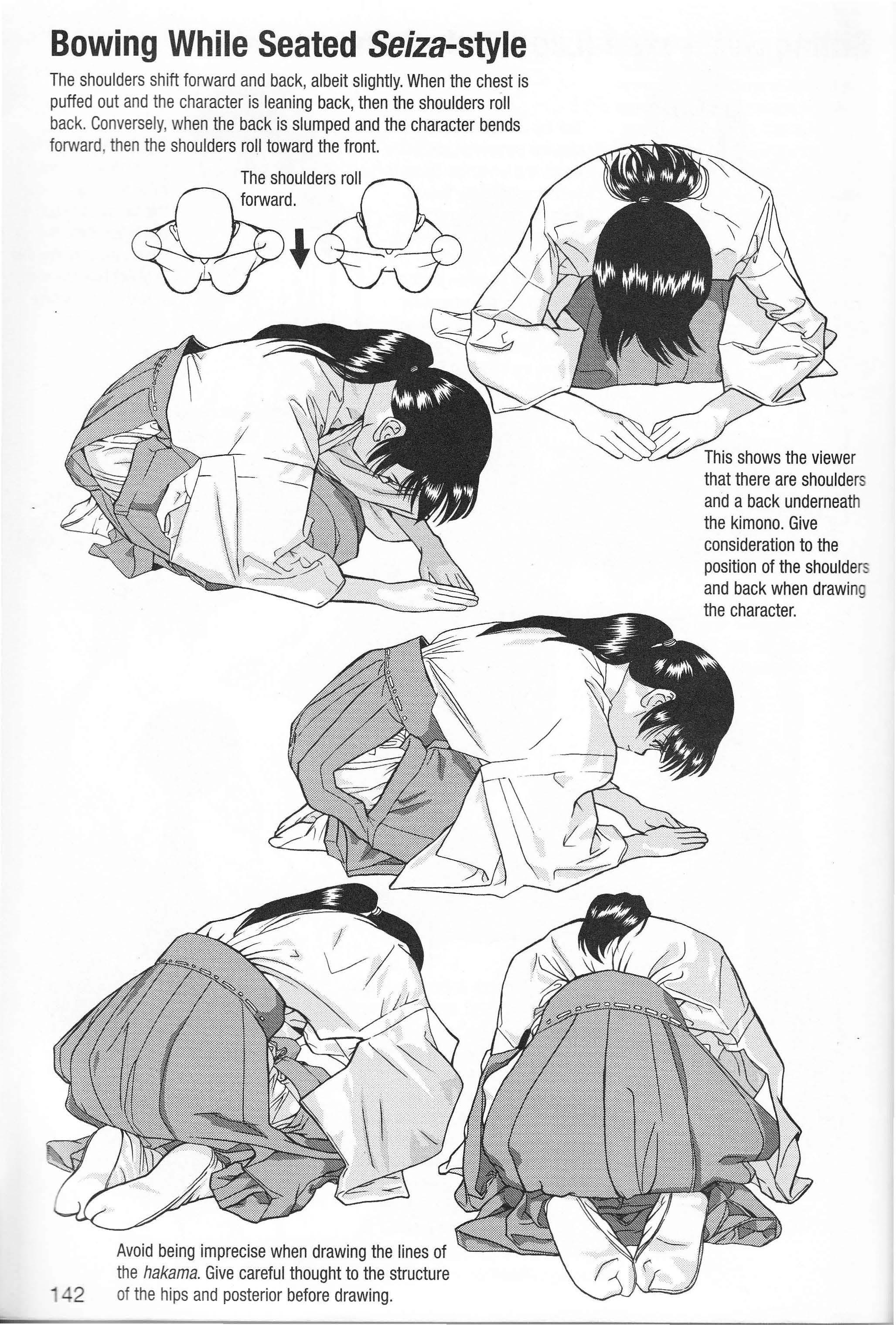
This shows the viewer that there are shoulders and a back underneath the kimono. Give consideration to the position of the shoulders and back when drawing the character.
In any painting or sketch, the shoulder gains a sense of volume from surrounding creases and shading. The loose and drooping cloth of the miko's robes allows ample opportunity for suggesting the body underneath.
The figure to the left shows the three lines used to give the shoulder a sense of presence. Main lines are indicated by the arrows.
This line extending from the shoulder suggests bagginess in the kimono.
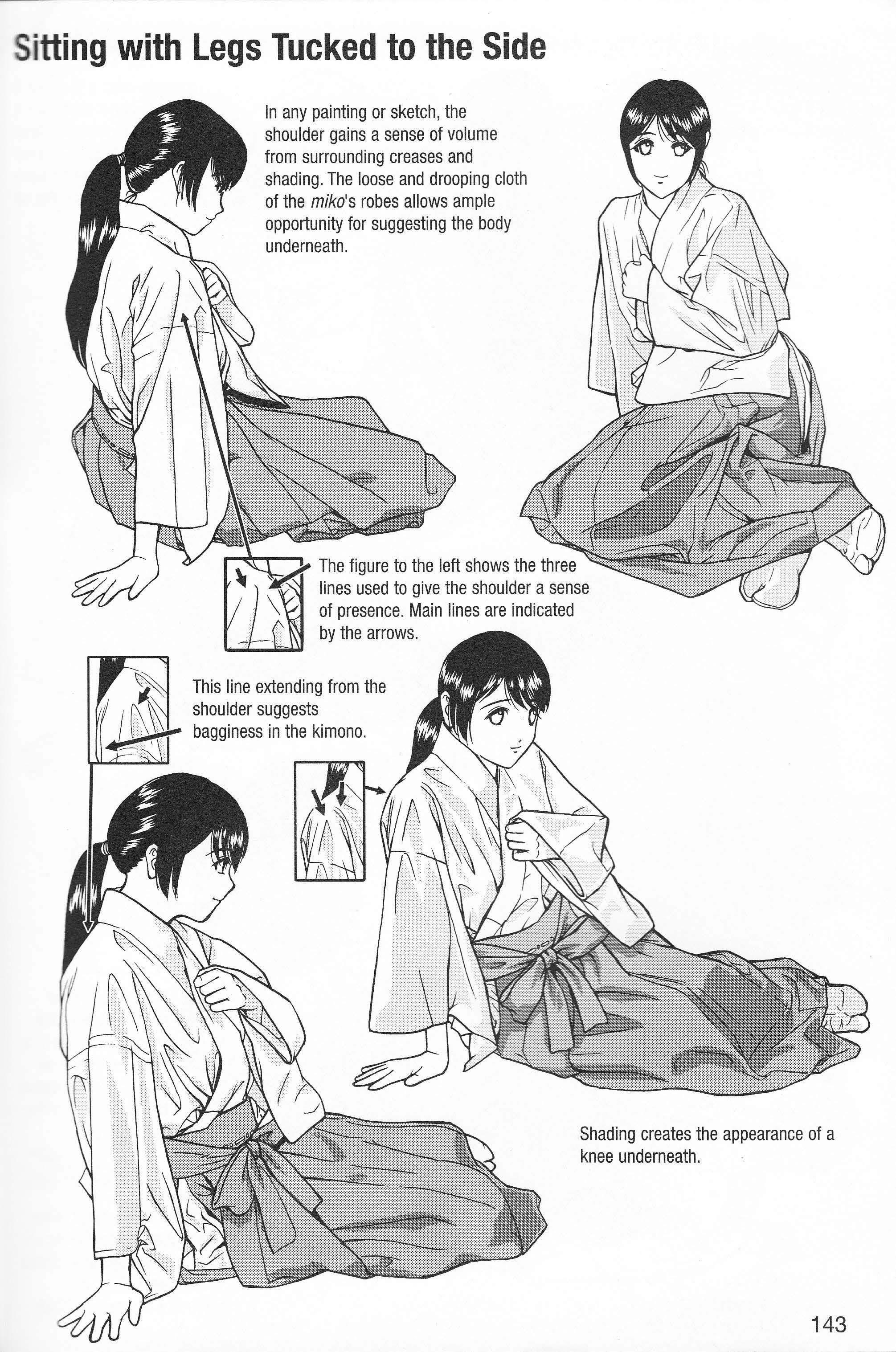
Shading creates the appearance of a knee underneath.
Keep in mind these lines that are obscured from view by the folding of the turi.
here represents the shadows formed by a Y-shaped ripple, as seen in the illustration below. Here, only the tone was used.
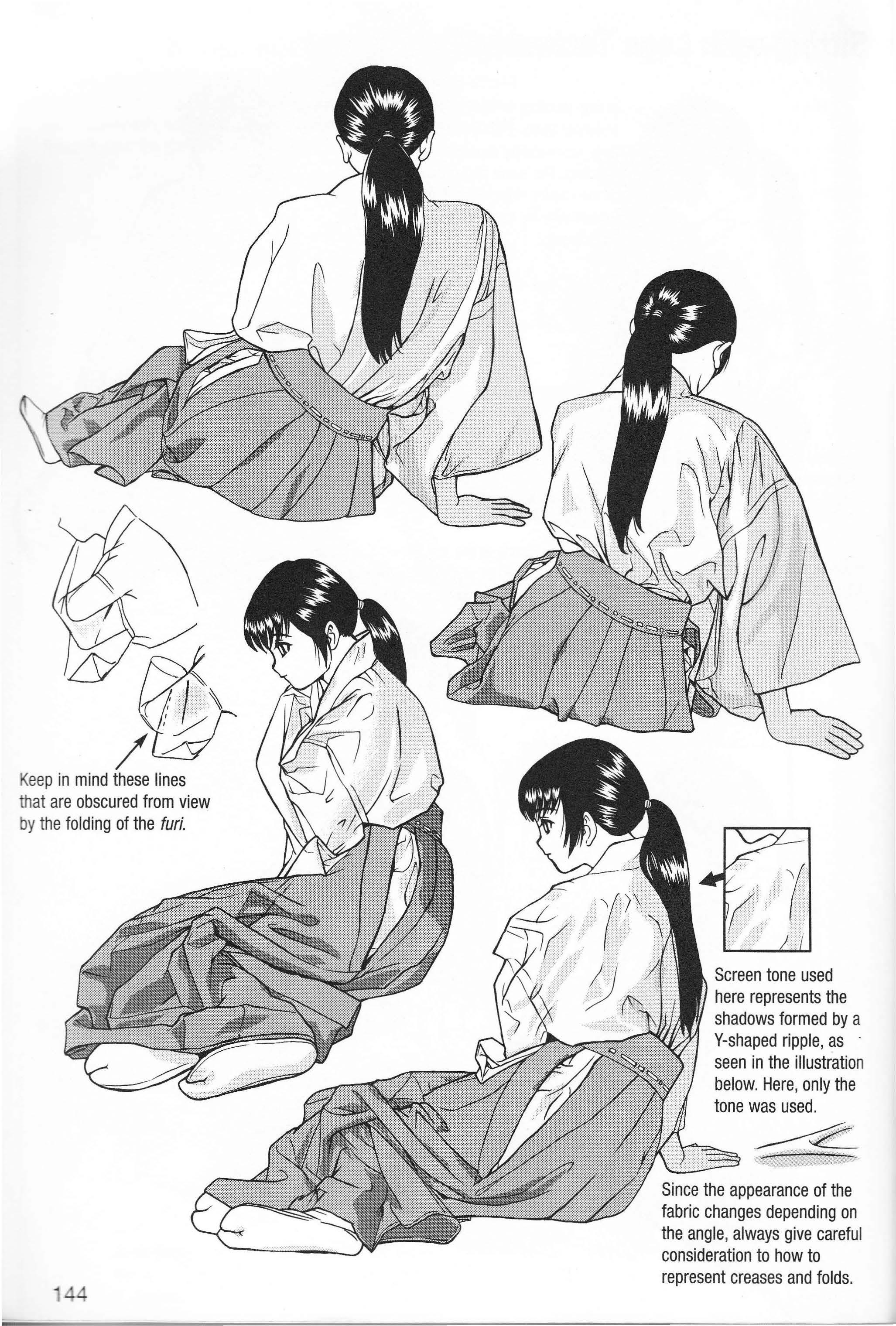
Since the appearance of the fabric changes depending on the angle, always give careful consideration to how to represent creases and folds.






